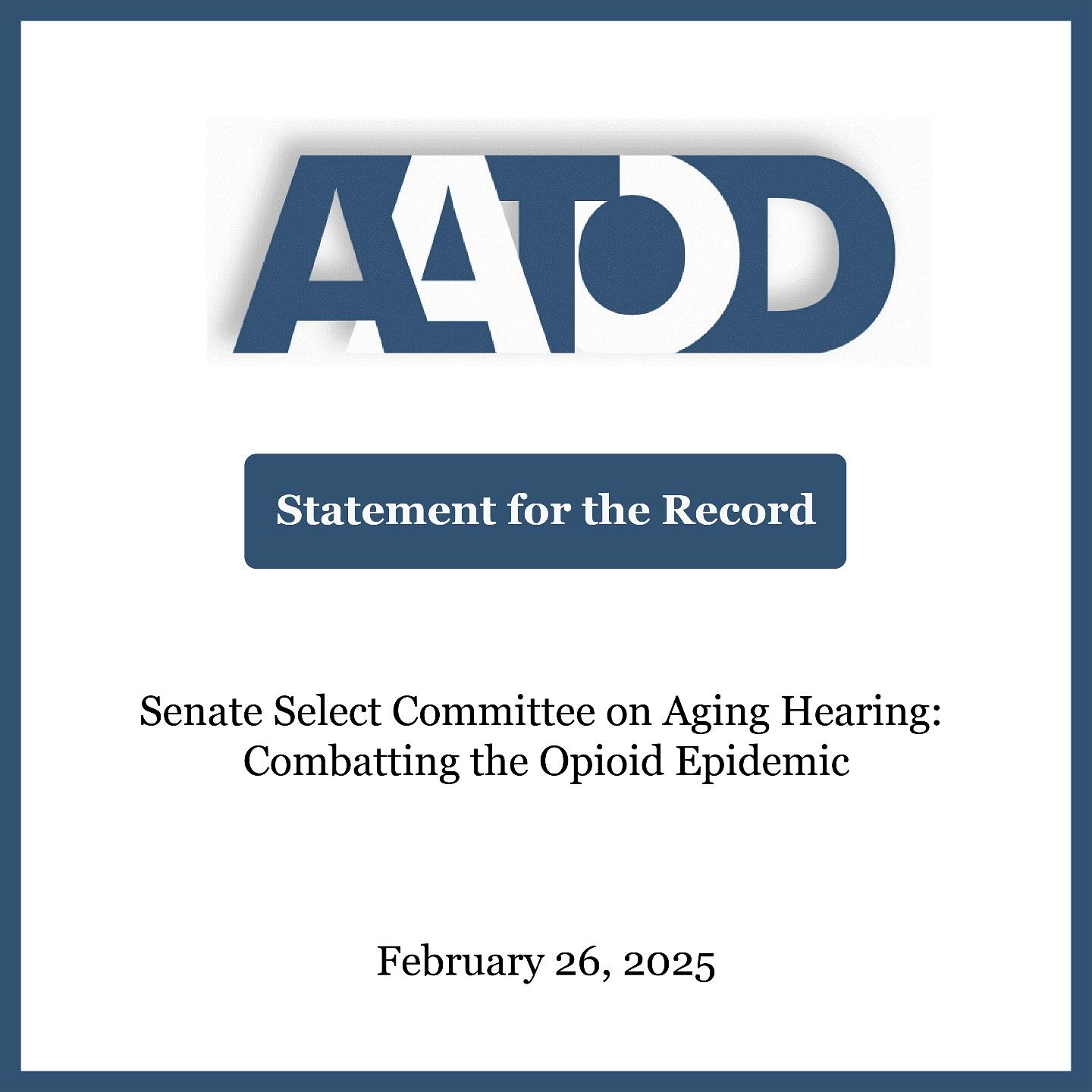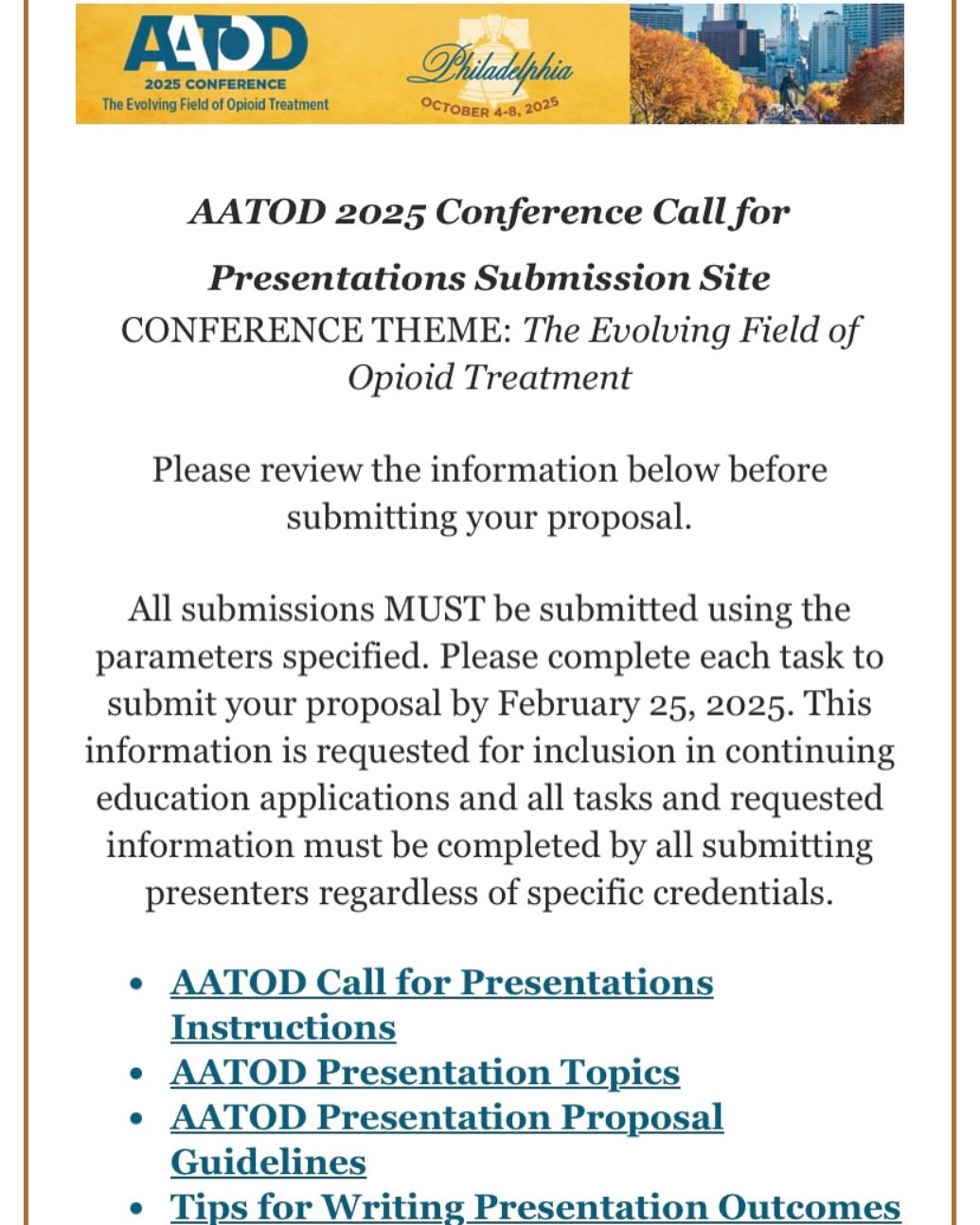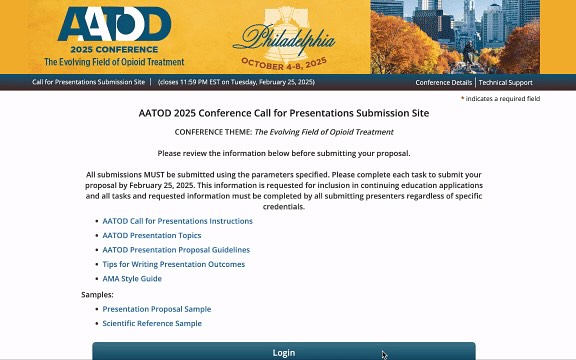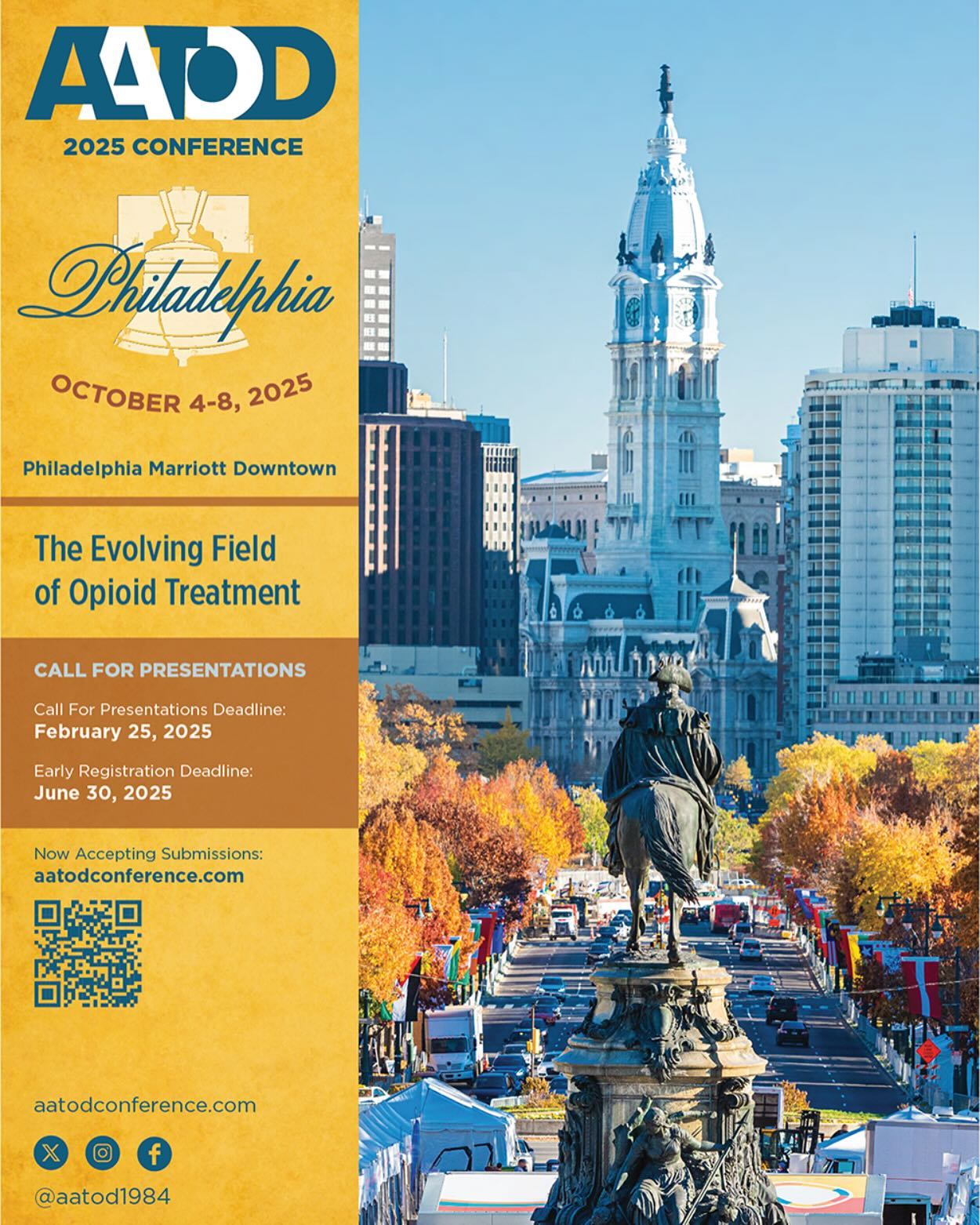Introduction
AATOD’s Board of Directors initially approved a strategic organizational Five-Year Plan during 2001, and subsequently updated the plan in 2007 and 2012. AATOD implemented these plans in conjunction with Board members, treatment providers, federal and state agencies, partnering policy organizations, corporations and patient advocacy groups.
The Board of Directors believed that it was critically important to go beyond the boundaries that restrict planning at the individual program and state level. It is understood that long-range strategic initiatives have been important to guide the future of our treatment system, requiring a focused effort in selecting the most critical initiatives, which will have the most substantive impact in shaping national substance abuse policy and organizational planning, resulting in improved patient care. It is also understood that time and funding are finite and need to be judiciously utilized in managing our resources to the best possible advantage. We will need to identify financial resources with regards to the sustainability of new initiatives during this five-year planning period, which will be incorporated into an implementation plan.
The following initiatives create a foundation for a forward leaning policy to expand access to OTPs wherever they are needed in the United States, to support integrated service delivery systems, increase access to third party funding in support of OTP services, working with all relevant federal and state agencies, to achieve these goals, working with our associates through the resources of the World Federation for the Treatment of Opioid Dependence and supporting our treatment provider colleagues when they face challenges to their systems of care in the states.
Increasing the Number of OTPs in the United States
As we cross into 2017, there are approximately 1,475 operating OTPs in 49 states, the District of Columbia, Puerto Rico and the Virgin Islands. The OTPs have expanded over the course of the past five years but the expansion has not been significant enough to meet the increasing needs of people with opioid use disorders, requiring access to comprehensive treatment services, which are provided through OTPs. Accordingly, AATOD will devote its resources in working with federal and state governments to increase access to OTPs wherever they are needed. We will work with all treatment provider entities, including non-profit and proprietary entities to expand access to care in underserved areas of the United States.
AATOD will work with SAMHSA and all relevant policy partners to accomplish the following goals. The first will be to identify existing treatment resources for opioid dependent individuals. The second will be to identify where care is needed in underserved areas of the country. The third will be to identify what financial resources are needed to provide support for such patient delivery. The fourth will be to work with all relevant parties in the criminal justice system and other parts of the behavioral and primary medical care system to ensure that patients receive comprehensive and well coordinated care. It is understood that this is a multi year effort and will require continued and ongoing coordination with policy partners, as indicated above.
Supporting Integrated Service Delivery Models
AATOD will build upon the work of the three policy papers that were developed by the Association for the Substance Abuse and Mental Health Service Administration and released during the summer of 2016. The objective of these papers was to showcase integrated service delivery models connecting to OTPs as the essential hub treatment sites in providing specialized care for opioid use disorders. This will require partnering with all appropriate medical societies, especially in integrating services between OTPs and DATA 2000 practices. A model that was developed through Johns Hopkins represents one opportunity to offer such program collaboration to effectively coordinate patient care.
AATOD will also work in collaboration with other provider entities in order to better integrate care with OTPs and other primary and behavioral care settings. Such models exist in a number of states and AATOD will continue to advocate for such service delivery.
Increasing Access to Third Party Reimbursement for OTPs
Medicaid
At the present time, 16 states still do not provide access to Medicaid reimbursement for OTP services. AATOD will build upon the work that we initiated during 2016 to provide guidance to state agencies and OTPs to implement such third-party reimbursement through Medicaid coverage. A recent success occurred when the state of Georgia decided to provide access to Medicaid reimbursement for OTPs in 2016. AATOD will continue to work with other state agencies in addition to federal agencies such as CMS Medicaid in order to continue to expand access to Medicaid reimbursement in support of patient care in OTPs. It is recognized that this is a “state by state” initiative and AATOD will utilize resources through grant mechanisms and other federal and state initiatives in support of this long-range plan. Recent articles have demonstrated an increase in the utilization of OTP services when Medicaid reimbursement is available to support such service delivery. There is one caveat with regard to expanding Medicaid coverage for OTP services in the states, which will be related to changes in federal policy through the new Administration.
Medicare
We will continue to work with the appropriate federal agencies to provide access to Medicare reimbursement for OTPs. This has been historically challenging especially since CMS Medicare has determined during 2016 that their agency does not have the standing authority to make this change within its own jurisdiction. Accordingly, AATOD will work with the White House Office of National Drug Control Policy, CMS Medicare and Members of Congress in order to create this opportunity. Once again, the new Administration may affect this strategic approach and that can only be determined as the agency leadership provides greater detail with regard to their policy initiatives.
Commercial Insurers
AATOD will also work with commercial insurers to develop model contracts for reimbursement between commercial insurers and OTPs. In addition, AATOD will work to develop cross training opportunities so that OTPs will learn how to engage such commercial insurers to better understand how to work with OTPs.
All of this work supports increased access to care through OTP development and to develop all relevant financial support so that patients can get access to OTPs.
Developing Current OTP Evaluation Studies
Methadone maintenance represents one of the most studied medications used in a treatment system. Methadone was the first of the three federally approved medications to be used in treating opioid addiction based on the early research work of Drs. Vincent Dole, Marie Nyswander and Mary Jeanne Kreek at Rockefeller University. A great deal has been learned over the past 50 years in treating opioid use disorders with medications such as methadone, buprenorphine and Vivitrol Naltrexone.
A number of elected and appointed officials have expressed concern about the most important studies, demonstrating the efficacy of methadone maintenance treatment, as being outdated. Accordingly, such officials have asked for more recent studies, evaluating the benefits of methadone maintenance in treating opioid use disorders. This kind of evaluation focuses on length of time in treatment, successful patient outcome and the cost benefits of providing access to such care for individuals in need of treatment. The benefits would extend to the individual, the family and community. AATOD will work with the National Institute on Drug Abuse and other research based organizations in order to evaluate the most current research in this area and to develop new research opportunities so that we can present current findings to elected and appointed officials. We anticipate that this will be a long-term initiative. One that will require collaboration among many parties and will include all of the federally approved medications to treat opioid use disorder.
Developing Educational Initiatives for Members of Congress
AATOD will work with relevant policy partners, including the Board of Directors in order to develop a sustained educational initiative to educate Members of Congress. The importance of this initiative was clearly identified during 2016 since so many Members of Congress do not understand how opioid treatment programs function, the characteristics of the patients we treat and the comprehensive services that are provided. There is also a major misunderstanding about how medications are used to treat opioid use disorders, especially methadone maintenance treatment. It is understood that this will require sustained financial resources in order to effectively coordinate how OTP administrators and patient advocates are able to meet with Congressional representatives both in district offices and in Washington DC. It is also understood that this will be a multi-year initiative which will certainly continue over the course of AATOD’s strategic five year plan.
Working with Federal and State Agency Partners in Support of Strategic Planning Initiatives
It is understood that AATOD will continue its work with the federal agencies which have jurisdiction in working with OTPs throughout the United States. We will continue to build upon our successful working relationships with the Office of National Drug Control Policy, the Substance Abuse and Mental Health Services Administration, the Drug Enforcement Administration, the Food and Drug Administration, the National Institute on Drug Abuse and all other federal agencies with a policy interest in this area.
Some of the major focus with SAMHSA will be to continue to develop cross training initiatives for OTPs, building on the knowledge that we gained in conducting a major survey among 51 CEOs in 30 states and addition to The District of Columbia during the summer of 2016. The survey generated extremely valuable findings, which will be included in future policy work with SAMHSA, the states and OTPs.
AATOD will continue to work with the DEA as they publish their revised Narcotic Treatment Program Guidelines, which is anticipated to occur during 2017. This collaboration will include the Substance Abuse and Mental Health Services Administration. Once the DEA promulgates these guidelines, AATOD will continue to work with DEA field agents and OTPs, and all of the SOTAs to better ensure that all of these parties are following the basic principles of DEA oversight.
Promulgating the Use of All Federally Approved Medications to Treat Opioid Addiction
AATOD will continue to promulgate the value of utilizing all federally approved medications to treat opioid use disorders through OTPs. This is the foundation of having OTPs as essential hub treatment sites for opioid use disorders and providing access to comprehensive services through more integrated models of care. This will include training for all relevant parties in how to properly use such medications throughout the course of patient care and as long as the individual patients benefit from such treatment.
Conference Development/Training
AATOD will continue to use its conferences as a method of showcasing leading initiatives and training for OTP personnel. These conferences began in 1984 and continue to the present time. We will continue to promote evidence-based practices and patient centered care through such conferences in addition to supporting patient advocacy training and methods of improving programs’ operational capabilities.
Webinar Development, Enhanced Communication
We will continue to use webinar based training resources as a method of advocating for the goals of this strategic plan. We developed such training opportunities for Medicaid expansion in 2016 and we will continue this work in 2017. We will also use the concept of such webinar development to further promulgate new training opportunities based on what we have learned from recently completed surveys as indicated in a prior section of this plan.
We will continue to utilize our website as a method of promoting new training opportunities and ensuring that our policy documents are widely disseminated through all of our communication sources. We will also plan on developing a mobile version of our website so that interested parties will be able to access materials from their iPads and phones.
International Work
We will continue to work with our partners in the World Federation for the Treatment of Opioid Dependence and EUROPAD in increasing access to treatment wherever it is needed in the world. We will build on our long-standing work with the United Nations Office on Drugs and Crime in addition to working with the U.S State Department as a method of increasing resources for developing programs in different parts of the world. At the present time, Vietnam and nations in Africa have been using PEPFAR funds to increase such access to care. AATOD will continue to work with the World Federation, offices within the United Nations and the U.S. Government in addition to policy makers and treatment providers to promulgate evidence based practices for substance use disorders.
Criminal Justice
AATOD will continue to work with the Legal Action Center and other policy partners to increase integrated care with criminal justice partners, including drug courts and correctional facilities. This will build upon the work of many years and the models, which were promulgated in policy papers published in 2016.
AATOD will release a criminal justice fact sheet for such parties during the early part of 2017 as a method of better engaging all such relevant parties to better integrate service delivery with OTP hub sites working with drug courts, correctional facilities and all related parties in the criminal justice system.
Prescription Opioid Use and Opioid Use Disorders
AATOD will continue its work with Opioid Treatment Programs in over 30 states though the support of the Denver Health and Hospital Authority (RADARS® System) to continue to understand the changing patterns of prescription opioid abuse and heroin throughout the United States.
We will continue to partner with NDRI, AATOD’s research partner in New York in continuing this work and to better understand how the OTPs can respond to changes in drug abuse patterns in different regions of the country.
PDMPS
AATOD will also continue to work with all relevant parties in promulgating the utilization of prescription drug monitoring programs in every state so that OTPs can access this information. From AATOD’s point of view and based on studies that were conducted during 2015, it is clear that patient care improves as OTPs access such PDMP databases. Counseling opportunities increase for such patients as they are identified as continuing to use substances by checking PDMP databases. We will also work with researchers to identify that most effective counseling interventions in this area which will support the use of medications through OTPS.
AATOD will continue to analyze the best methods of how OTPs can access such data through PDMPs, which will include training opportunities for OTPs and appropriate parties, which will all work in meeting this objective. As is the case with other elements of this strategic plan, this represents a multi-year strategic opportunity.
Conclusion
There have been many challenges to the OTPs opening new treatment centers. Perhaps the greatest challenge is educating a wary American public in overcoming the stigma of opioid use disorders, especially the use of medications in treating such disorders in community based settings.
AATOD will continue to utilize its available resources and develop new funding opportunities in order to meet the challenges the system faces and will continue to face.
The AATOD Board of Directors is grateful for the participation of treatment programs and many policy planning partners to achieve long term success on behalf of the patients we treat. The organizing hallmark of AATOD has always been developing collaborative, long term working relationships with all partners in the treatment of our patients both in the United States and throughout the world. Our focus has always been to improve access to care and when such access is available to be certain that the quality of care is evidence driven and patient centered.
It is anticipated that the next several years will continue to represent major challenges to our system. It is critically important to educate Members of Congress, State Legislatures and the American public about the value of treating opioid addiction with medications based on evidence.






























